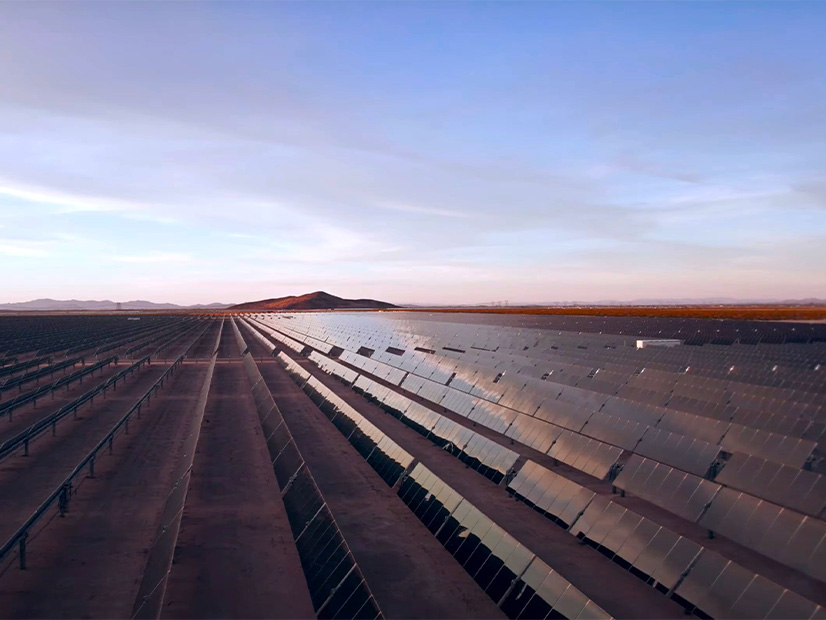WASHINGTON — FERC said it will work with federally recognized tribes on whether it needs to issue a new rulemaking to address their issues interconnecting renewable resources to the grid.
The announcement at the commission’s Sept. 19 open meeting comes just over a month after the Alliance for Tribal Clean Energy filed a petition for an expedited rulemaking on the subject, arguing the few tribes able to build major generation projects face unique issues in hooking them up to the grid (RM24-9).
“This will be the first time that the commission engages in tribal consultation on an electric markets issue,” FERC Chair Willie Phillips said at the meeting. “Improving the commission’s tribal engagement and consultation practices is one of my top priorities and a commitment that’s reflected in our equity action plan.”
FERC is offering all its staff a training opportunity with Maranda Compton, an expert on tribal legal issues and a citizen of the Delaware Tribe of Indians, Phillips said.
The alliance argued that some FERC standard rules, such as commercial-readiness deposit requirements and withdrawal penalties, do not make sense with its members’ projects.
“Tribal projects that advance to the point of seeking interconnection are not speculative,” the tribes said. “They are not undertaken to take a big risk in hopes of making a big profit. They are not motivated to take advantage of fluctuations in the market. They are pursued to self-serve tribal needs for electricity to advance the goals of lower electricity rates, revenue for tribal governments, tribal economic development and tribal self-sufficiency.”
Tribal lands are home to some of the best energy resources in the country, but on average, they pay some of the highest energy rates, with 56% paying more than double the national average, they said.
“While tribal nations are eager — indeed, desperate — to change their economic predicament and energy circumstances, they find themselves stymied by unworkable and unduly burdensome rules that fail to account for tribal nations’ unique organizational structures and funding constraints,” they said.
Building utility-scale generation projects can help redress tribal poverty and energy inequity through economic development, creating revenue and jobs, and promoting self-sufficiency, they wrote. They asked FERC to adopt limited and narrowly tailored commercial-readiness and withdrawal penalty rules that reflect their financial barriers, such as not being able to take out loans on land they hold in common among all their citizens.
The issue also came up at the recent technical conference on interconnection, during which the Oceti Sakowin Power Authority’s general counsel, Jonathan Canis, described the difficulties in trying to get a major project connected to the grid.
The power authority is jointly owned by seven Sioux tribes and is trying to build two wind farms in western South Dakota, which is a high-voltage transmission “desert,” Canis said. Interconnection studies would have the authority pay $250 million for the transmission on its own.
“Of course, that made our projects economically infeasible,” Canis said. “To put it in perspective, our entire estimated budget for development and construction for two wind farms is $1.1 billion, so this increased our total project cost by 20 to 25%. We had to withdraw from the queue, and our projects are now on hold. We’re focused 100% on how to get back in there and how to make it affordable.”
The authority worked with the Western Area Power Administration and Basin Electric Power Cooperative to develop a transmission solution, a 700-mile 345-kV project that would cross Sioux land. But only parts of it were picked by SPP for the regional transmission plan, and those do not touch tribal lands, Canis said.
The Department of Energy’s Loan Programs Office also has the funding for tribal energy projects, but that has never been used, outside of one commitment of $74 million for a solar microgrid to serve a big casino, Canis said.
“We’re going to ask Congress to repurpose that fund to another DOE office that will really put that money to work,” Canis said. “And to put it in perspective, there’s only about five tribal development companies in the country, and there are not that many tribes with enough land area to develop their own wind farms. So, a fraction of that $20 billion could fix all our problems.”



